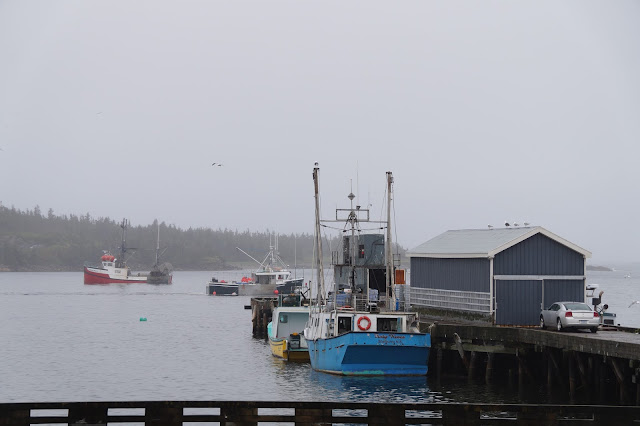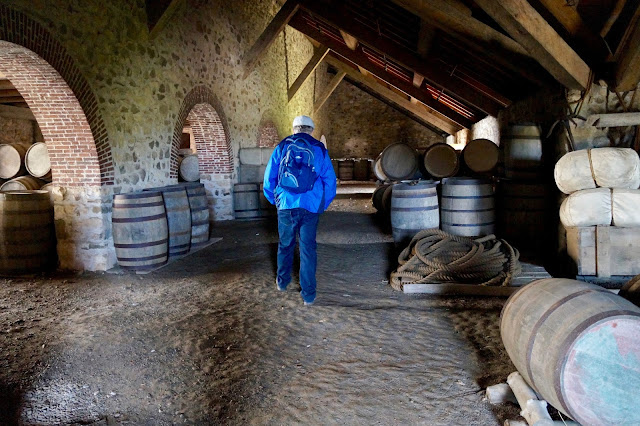Our next stop was Louisbourg, Nova Scotia. Our RV Park site
overlooked a local fishing pier.
Ralph asked at the front desk about local points of
interest. He was directed to a small building beside the pier. For $30 he purchased 5
pounds of snow crab that had been cooked then flash frozen. Wow, what a treat!
We defrosted enough for a feast and wiggled the rest into our freezer.
The history of Louisbourg has been largely shaped by its
harbour. Well-protected, relatively deep and close to the fishing banks, the
harbour attracted French settlers in the 1700s.
From 1713 to 1768, the fortified port of Louisbourg was very significant in the Franco-British struggles to expand their empires.
Many of the Fortress of Louisbourg buildings have been
reconstructed and create a feeling of stepping back in time.
Around each corner
we encountered staff dressed in period costume. They were friendly and
knowledgeable about daily life in a fortified town.
Tables were set and meals were prepared.
The church was an integral part of everyone’s life.
The storehouse was stocked with many of the necessities of
pioneer life as well as luxuries such as rum. Even today rum is stored and aged in
barrels and sold locally.
In 1720 coal was discovered near Port Morien. Industries,
power plants and individual homes along the eastern seaboard were dependent on
the ships which delivered coal and returned with whatever cargo they could pick
up.
By the 19th century ice-free Louisbourg became
the winter export port for Cape Breton coal. Trains became a vital link for
moving the coal and transporting the miners and families.
Cape Bretoners have persevered and changed with the times and
the economy but the sea and its bounty are always at the heart of the community.



























beautiful.
ReplyDelete